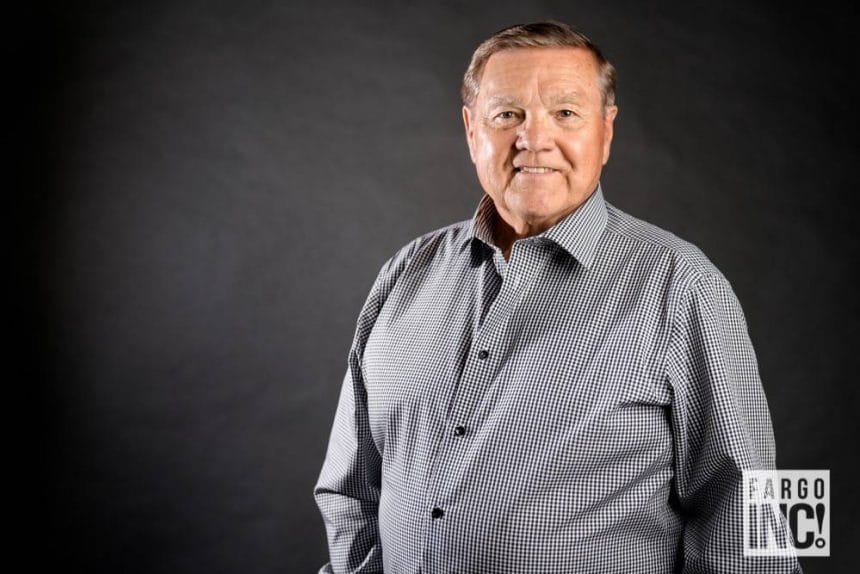Photos by Hillary Ehlen and special to Fargo INC!
My first interaction with Gary Tharaldson, North Dakota’s richest person, came at 4 p.m. on a Wednesday. It was a quiet day in the office. Most everybody was at the groundbreaking for the Block 9 Tower downtown so it was just one other employee and I in the office at the time. From my office, I hear a bell going off letting me know that there’s somebody who needs help up front. I hear from my office, “Is Andrew here?”
I trudge out of my office wondering what this is going to be about. I walk up to a man who looks like he’s not afraid of hard work but still sees the best in the world. In a polo shirt and khaki pants, he introduces himself as Gary Tharaldson and hands me a signed copy of his book.
That’s right. North Dakota’s richest man, valued at $900 million, traveled to Downtown Fargo and braved the construction and traffic just to deliver me, a lowly journalist, a copy of his book. And that’s exactly the type of person that Gary Tharaldson is.
After that interaction, Tharaldson quickly agreed to do an interview and, boy, did we learn a lot. Here are 25 lessons we learned from our hour and a half interview.
1. Share The Wealth
In 1999, Gary Tharaldson created an ESOP (employee stock ownership plan), which made his employees part-owners in the company. This made a radical difference in the operation of the company. His more than 4,000 employees started acting as owners, which improved their performance and commitment to the company.
“My mindset has always been to share the wealth. Before establishing the ESOP, I gave all the employees in my office in Fargo stock in a hotel, even when we were a small company. But I wasn’t able to do the same for all the other employees—desk clerks, housekeepers and managers—out in the field.”
“The ESOP helped us become a great company. We went from being a small operator to being one of the best in the industry. We still maintain that today. You can’t do that if you don’t take care of your employees. The ESOP helped me take care of my employees.”
“The best thing I ever did was sharing the wealth with my employees. I don’t think any employer could do anything better than that for their employees.”
2. Remember Your Roots
Born in Dazey, N.D., a small town with a population of about 200 people at the time, about an hour and a half northwest of Fargo, Tharaldson has come a long way since his upbringing. His father was a contractor and Tharaldson was one of six kids. During his senior year at high school, he lived and worked on a farm as a farmhand. Despite all his successes, Tharaldson hasn’t forgotten where he came from.
“One of the reasons I did the ESOP was that I always thought about my parents. They had nothing to speak of. When I grew up, I went to work at the same place as my dad for $1.25 per hour and he was making $1.75. When he came to retirement, he didn’t have anything. I look at my employees the same way as my parents.”
3. Take Lessons From Your Early Years
Tharaldson graduated from Valley City State College with a double major in business administration and physical education. He originally got his start as a gym teacher in Leonard, N.D., and still holds on to those lessons he learned during this time.
“I was 21 years old when I started teaching and still growing as a person. Just getting up in front of a class to talk to students made me nervous. I loved playing sports as a student and then coaching at the high school. Competing on the football field and basketball court helped me learn how to compete in business and succeed. As a coach, I helped students become better competitors and people, and I try to do the same as a boss.”
4. Learn How To Sell
Tharaldson quickly realized that his salary of $5,800 a year as a gym teacher wasn’t going to be enough for the life he wanted. That’s when he got into selling insurance. Despite his insurance company eventually taking off, Tharaldson realized he wasn’t a natural born salesman.
“You have to remember where I came from. I worked on a farm during high school for only $50 a month plus room and board. I got up at 5 o’clock to do chores and then rushed off to school. The farm family allowed me to play sports, which was lovely, but there wasn’t time for a social life. As soon as I got back in the evening, I had more farm work and then homework.”
“The lack of a social life during those formative years contributed to me being very nervous in front of a class when I started teaching. Then when I started selling insurance, I was nervous knocking on doors and I hoped the people weren’t home. I knew I had the wrong mindset. Then I went out with a new manager who trained me, and I realized that, ‘If that guy can do it, I can do it too.’”
“It was really a change in my attitude. I read books about positive thinking and listened to those dare-to-be-great tapes. That put a fire in my belly and I wanted to do something on a large scale.”
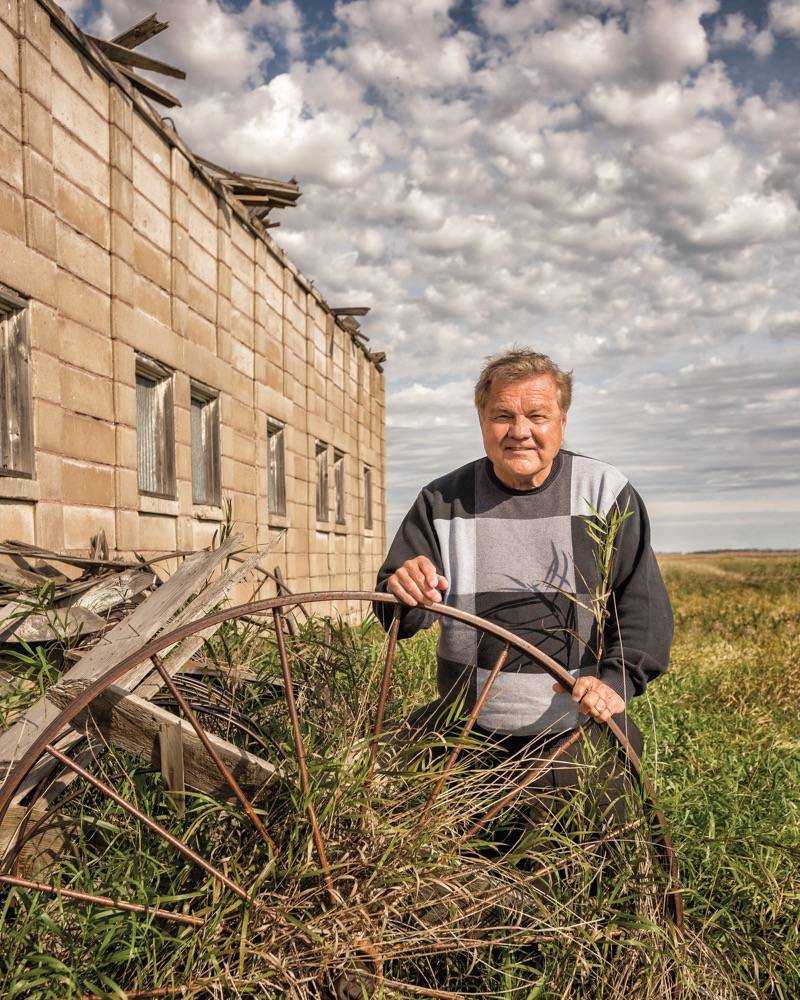
5. Don’t Just Focus On Your Leadership Team
It’s very simple as a business owner to simply focus on and reward your leadership team. However, Tharaldson made a point to focus on all his employees. This desire to care for all his employees was one of the main drivers of launching the ESOP. Tharaldson isn’t alone with that sentiment, though, as more and more business owners are turning their companies into ESOPs. The National Center for Employee Ownership reported that, as of March this year, there were 9,910 businesses using ESOP like plans in the U.S. That means about 15.5 million American workers are involved in an ESOP and total assets total about $1.4 trillion.
“The employees I really appreciated the most were the housekeepers. Back in 1999, wages weren’t very high, and housekeepers were making about $6 per hour. They couldn’t save anything for retirement. But with the ESOP, housekeepers who worked for 15 years walked away with almost as much as they had earned in their retirement accounts.”
6. Value Your Employees
As described in Tharaldson’s biography “Open Secrets of Success” by Patrick J. McCloskey, once the ESOP took effect, the turnover rate went from about 40 percent to less than 20 percent.
“Growing up in a small town made me realize what life is really like for people coming from not having much. That’s why it was so easy to relate to the housekeeping staff and other hourly workers. Typically, those employees were going to be there a long time. I think the type of childhood I had made me more inclined to help other people or provide for them. With the ESOP, employees became owners and they acted like owners, making the company much better as a result.”
7. No Matter What You Achieve, You Will Still Get Nervous
Even at the age of 73, Tharaldson isn’t slowing down. About 10 years ago, Tharaldson’s team built the Tharaldson Ethanol plant in Casselton, N.D. Tharaldson Hospitality Management also has $1.3 billion in projects either under construction or in the pipeline, which is 63 projects in total with 20 that are currently under construction. However, despite that never-ending desire to grow, he still gets nervous.
“I still struggle a bit with getting up in front of a crowd to give a talk. I’m going to a conference in Phoenix next week and I’ll be on a panel. That’s much easier for me. I prefer people asking me questions and I give answers.”
8. It’s Not About The Money, It’s About Winning
In “Open Secrets of Success,” there’s a quote from Tharaldson that accurately sums up what drives him. “You always set goals, but money is just a means and a measuring stick. It doesn’t mean that much to me personally. The game is what I like.”
“I like to win. When I made the employees owners, it was not only me succeeding but they were succeeding too. That’s the same as it is today. I could have retired, but I love the game. I love my people and the way they think and do things. Now I’m helping them become better off through their association with me. Trust me, I have a lot of great people who love to perform extremely well.”
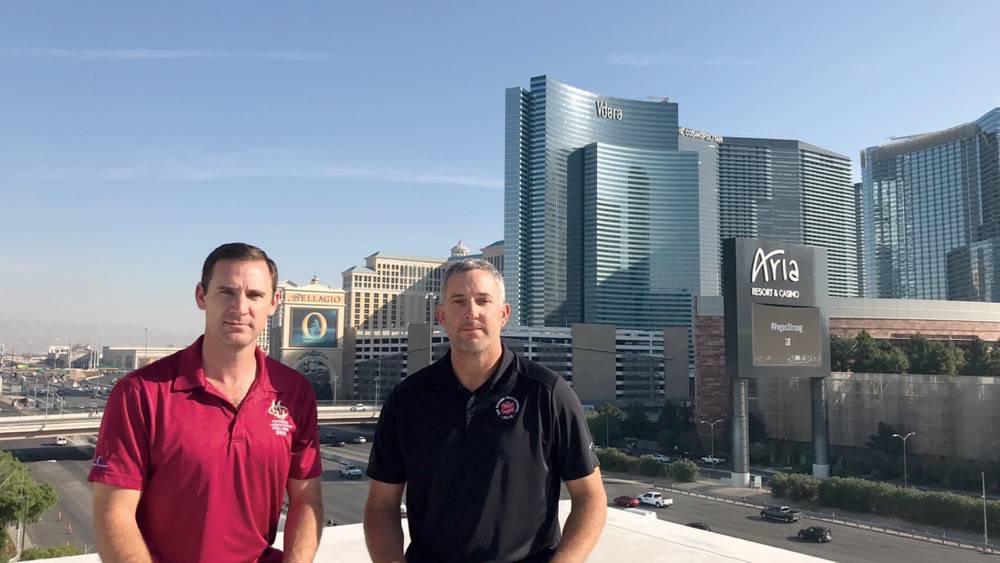
9. Find The Right People To Delegate To
Some of Tharaldson’s key leadership team has been with him a long time. Aimee Fyke, the Chief Operating Officer of Tharaldson Hospitality Management has worked for Tharaldson for 27 years. Don Cape, Director of Real Estate & Development has worked for Tharaldson for 15 years. Joe Blagg, the Development and Finance Manager, has worked for Tharaldson for 12 years. Tharaldson is great at trusting and delegating to his team to make crucial business decisions, including hiring.
“I don’t normally hire anybody, not anymore. My team has been with me quite a few years, and they do most of the hiring today. Even in the early years, we had a set of criteria for hiring managers and other employees. I was not really involved much with that. I approved the applications, but somebody else brought them to me.”
10. There’s Beauty In Simplicity
Originally published in 1982, Ken Blanchard wrote a famous book called “The One Minute Manager.” In this book, Blanchard laid out simple rules to manage by. Those include setting one-minute goals, giving one minute praises and doing one minute redirects. The idea behind the book is to simplify the way you manage, which Tharaldson was doing long before the book ever came out. In fact, one of the attributes Tharaldson contributes much of his success to is the fact that he was always a sole owner and never had to run ideas by a board.
“I’m like a 30-second manager. If somebody comes and asks me a question, within 30 seconds, he or she is almost always going to get the answer. I don’t want to waste time. The way I manage a company, it’s simple and efficient.”
11. Servant Leadership
There is a popular management philosophy called servant leadership. This was first coined by Robert K. Greenleaf in an essay published in 1970 called “The Servant as Leader.” In this essay, Greenleaf defined servant leadership as the natural feeling to serve first and put people at the forefront of everything you do. He also advises everyone to ask themselves the following questions: “Do those served grow as persons? Do they, while being served, become healthier, wiser, freer, more autonomous, more likely themselves to become servants? And, what is the effect on the least privileged in society?”
While this idea has become popular over the last couple decades, Tharaldson was doing this long before it had a name.
“I don’t know why I started being so efficient. Maybe because I don’t like meetings. Servant leadership, I learned about at the University of Mary by serving on their Board of Trustees. What a great concept. I always tried to practice servant leadership but didn’t have a name for it. What I do, I don’t ever see as work. I’m just having a great time. Even in the bad times, it wasn’t really so bad.”
12. Common Sense Can Go Further Than An MBA
Tharaldson will be the first to tell you that he’s not a genius. However, he is a firm believer in the power of simplicity.
“I have thousands of employees with managers who make the right decisions. If issues come up they can’t solve, the senior managers come to me. The thing I’ve been blessed with is a lot of common sense. The other thing I’ve been blessed with is that I listen pretty well. If you listen, you pick up things quicker. A lot of times, people want to be in total control. I want them to be in control, but then I add something to what they’re doing.”
13. Stack The Deck In Your Favor
A prime example of Tharaldson’s common sense leading to his success is where he put the laundry rooms in his hotels. It was common that laundry rooms would be in their own room somewhere in the hotel. However, Tharaldson put them right behind the front desk so that the night front desk clerk could do the laundry during the slow night hours. This cut costs and worked great for their smaller hotels.
“I like to think that I’m a card player who stacks the deck in his favor. I try to do everything I can to increase profits. From finding a site, to the number of rooms we build for the hotel brand, I always want to do the best I can. I always want to be with the best brands in the hotel business. We started with the best budget brands, and as the company grew into the mid- and upper mid-level markets, we transitioned to the best brands in those sectors. Today, we build and operate Marriott, Hilton and IHG brands.”
14. Honesty Is The Best Management Style
Midwest nice can also be known as Midwest passive aggressiveness. So many people are afraid of confrontation. That’s not the way that Tharaldson sees it, though. He’s found that honesty is the best approach.
“If I see something wrong, I talk it through with my senior managers. That’s my management style. Without criticizing, I try to make sure they understand there’s a better way to do things. As fast as we’re growing, mistakes happen, especially in new buildings. An architect could make a mistake, especially since we build hotels for 12 different brands within the three group brands. No one tries to make a mistake, but we have to check everything to make sure something isn’t wrong with a new building.”
Tharaldson’s Next Project
The next industry that Tharaldson is hoping to tackle is quite a stretch from what he knows, but he’s doing it for a good cause. He’s now working with Dakota Medical Foundation and Dr. Daphne Denham on the Concussion Care Initiative.
The current concussion standard of care is for a patient to rest until a patient becomes symptom-free. This new initiative is bringing hyperbaric oxygen treatment (HBOT) to concussions. Hyperbaric oxygen treatment is a one to two hour treatment in which a patient breathes 100 percent oxygen in a hyperbaric chamber. While in the chamber, the pressure in the chamber is increased to an equivalent of riding in an airplane. This causes a dramatic increase in the amount of oxygen in the patient’s blood.
Tharaldson, Dr. Denham and DMF are working together on this initiative to improve the standard of care for concussions. It will focus on ensuring HBOT will be available free of charge for up to 100 local student-athletes. The ultimate goal is to ensure that all children participating in sports will receive the most effective concussion treatment.
This initiative will run through spring 2019 and will attempt to answer the question of what’s the economic cost of concussions and the effectiveness of HBOT. The ultimate goal of the initiative is to change the discussion around what concussion treatment looks like.
“My goal is to put as many of these clinics in as many places as possible in order to help kids, veterans, cops, emergency service people,” said Tharaldson. “They all suffer from the same thing: either concussions or post traumatic stress.”
HBOT won’t just help student-athletes. Tharaldson has numerous stories of veterans who underwent HBOT because of injuries they sustained while serving their countries. On average, 20 veterans commit suicide everyday. Part of this is attributed to injuries suffered while serving.
The ultimate goal is to get treatment covered by insurance companies.
“Money will be the driving force to get this covered by private insurance and to a larger market,” said Dr. Denham. “What is so exciting is that it is such an enormous cost savings, so it will happen. We all know that we want it to happen because the students are so much better off. We have students that get a concussion in Friday night football that are able to return to school by Monday morning. Some may need a little more time to fully recover, but most are 100 percent back to their pre-concussion self by the end of the week, especially if we get the treatments started in the first 24-48 hours. Ironically, these students do not ever know how bad their concussion would have been, because we are stopping their concussion from progressing, and what could be better than stopping the brain injury?”
While Tharaldson is obviously a successful businessman, his motivation behind this initiative isn’t financial.
“Our whole idea of the concept is a little bit different,” said Tharaldson. “We are here to serve the masses, not the classes. We want to serve the people who can’t get it. The soldiers can’t get help unless we find a way. If you’re a large healthcare provider and you’re going to charge $1,000 a treatment, we’re going to charge $225 a treatment.
“It’ll be a nonprofit organization but take all the money and find the next thing. If you make a profit, and if you serve masses and you get a lot of people, there will be profit. People have asked, ‘Are you ever going to make any money on this?’ The early couple days, I thought, ‘I don’t know,’ but things are going pretty well.”
A More Technical Look at How HBOT Works

Normally, each cell is able to receive the necessary oxygen for regular function.

This figure demonstrates tissue after a trauma. With an injury, some cells are not able to get enough oxygen. Cells die (black) and some are injured (blue). Blood vessels may also be pushed closed by swelling (grey).

This figure demonstrates tissue under hyperbaric conditions. Oxygen is able to travel to the cells that need it, even if the blood vessels are closed. Swelling goes down, too, which may open some of the vessels back up. Dead cells are still dead though.

After several hyperbaric treatments, new blood vessels can grow into the injury, if needed. All cells are getting better oxygen, so they can begin to remove the dead cells.
- 15%: The number of high school athletes who experienced a concussion in the past year, with 6 percent suffering more than one. * According to a recent CDC report surveying nearly 15,000 kids
- 15%: The number of concussion sufferers who needed academic help a year after their concussion.
- 27,000: The number of North Dakota high school student-athletes. That means roughly 4,000 kids will suffer concussions this school year.
15. Have Fun At Work
Tharaldson has been an avid softball player and that competitiveness has been evident throughout his entire life. That drive to win continually pushes him in business to do more and is why he’s not going to just coast despite all his accomplishments. That competitiveness also creates a curiosity to get to know his employees better.
“I truly enjoy what I’m doing and who I’m working with. I would never want to coast at work because I wouldn’t have any fun.”
16. Know Your Niche
In business, there are shiny lights everywhere. Tharaldson could have gone in a hundred different directions with his business. However, he knew what his niche was: limited service business-suite hotels. He was able to drastically cut the normal building and operational costs of running a hotel while still maintaining high quality service for customers. This yielded above average profit margins for the hotel industry.
“Here’s what happens: In good times, consumers trade up from economy to mid-level hotels. If money is coming in, people want to stay in better-quality hotels. In bad times, customers choose less expensive than upscale hotels. They trade down into the middle market that I’m in. So, in good and bad times, that’s how you we get high returns in our business.”
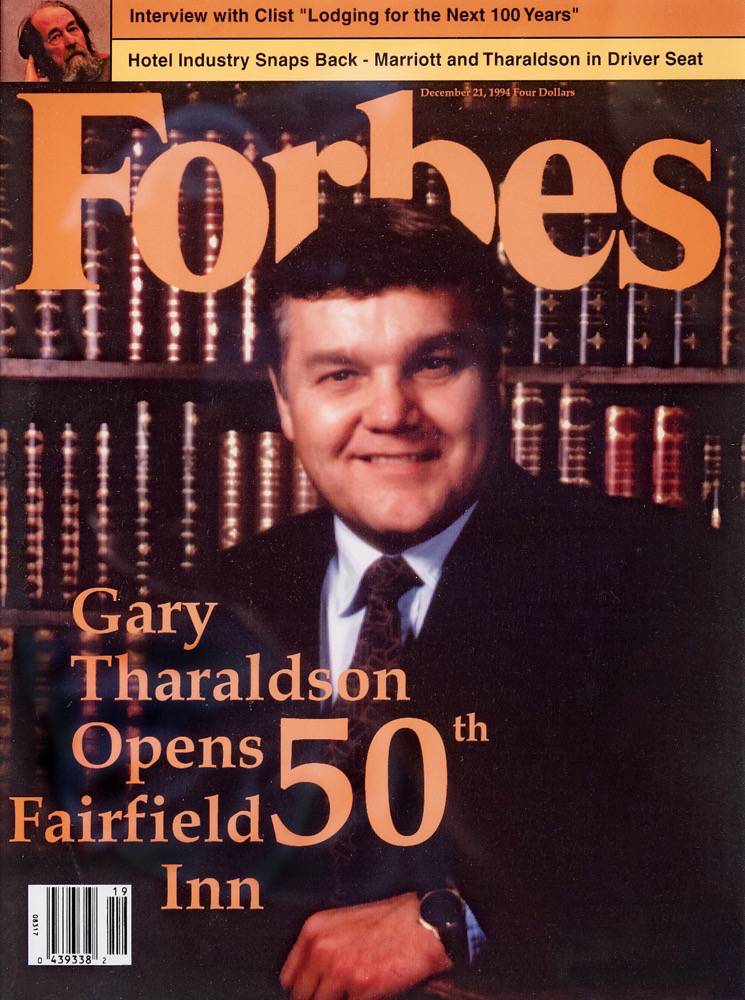
17. Being An Owner Is Like Being A Cheerleader
On the last page of “Open Secrets of Success,” McCloskey states one of Tharaldson’s favorite business quotes from B.C. Forbes. This quote sums up his management style:
“The most successful executives carefully select understudies. They don’t strive to do everything themselves. They train and trust others. This leaves them foot-free, mind-free, with time to think. They have time to receive important callers, to pay worthwhile visits. They have time for their families. No matter how able, any employer or executive who insists on running a one-man enterprise courts unhappy circumstances when his powers dwindle.” – B.C. Forbes
“I always say that being an owner is like being a cheerleader, because you have to let your people know that you appreciate everything they’re doing and that they’re doing it extremely well. It’s also very important for the people who are under me to let the people below them know how much they appreciate what they’re doing. This is how we created a great company culture. We have to keep that culture going from top to bottom.” – Tharaldson
18. Think About Your Succession Plan
While Tharaldson isn’t slowing down any time soon, he is thinking about what comes next. His kids will ultimately take over the business and it’s a job they’ve been prepping for their whole life.
“We’re building the company to last for decades and my children are learning about the business and will be ready to take over when the time comes.”
19. Know Your Employees
Tharaldson takes an actual interest in his employees. He takes time to get to know his 30 employees in Fargo and actively asks about their children, particularly their children’s involvement in sports. That interests goes a long way with his employees.
“Some owners don’t go out and talk to their employees very often. Basically, employees want to know they’re wanted and needed. They want to know that you know they’re doing a good job.”
“At the corporate offices, I have always let my employees leave work to take a child to the doctor or take off early for a kid’s sporting event. They can come back later and finish their work. It all gets done. This is more difficult to do at the hotels since the staff is there to serve the customers, but the managers on site accommodate employees and their families as much as possible.
“I walk around our offices and the hotels to ask questions and thank my people. I say things like, ‘I really appreciate you getting that information to me so quickly.’ Praise goes a long way. It has to be legitimate praise though.”
What Makes An ESOP So Great
As Patrick J. McCloskey described in Tharaldson’s biography “Open Secrets of Success,” there are four important benefits an ESOP offers.
1. There are no upfront costs for the employees. Although setting up an ESOP might cost as much as $250,000 in legal fees, the owner pays these. Whatever percentage of the company the employees buy, the purchase amount comes totally out of profits going forward.
2. The owner pays no tax on the transfer of ownership since the employees won’t begin to pay for the company until after acquiring their share of ownership.
3. As long as the employees are buying more than 30 percent of the company, capital gains taxes are deferred completely, with the provision that any investments from profits are made in American companies.
4. An ESOP supplies a succession plan. The central idea here is that people who know the company and the industry best are the ones who end up running the company. They also have an acutely vested interest in long-term sustainability and growth.
20. Your Role Will Change
Over the course of his 50 years, his role has dramatically changed. He trusts his employees to fulfill his vision.
“In the early days, I was very involved in all aspects of the business. Today, I let my key people run the company. I’m still involved and informed about everything. I’m just not as hands-on.”
21. 25-40 Rule
While Tharaldson clearly isn’t afraid of hard work, you might be surprised at the number of hours he puts in at the office. He follows a strict 25-40 rule, which means that he only spends 25 hours a week in the office or field but another 40 hours thinking about ways to improve his businesses.
“Sometimes, owners and managers get so stuck in the office, they don’t have time to think. I have always taken a lot of time to think about how to improve my business operations.”
Tharaldson’s Best Monopoly Advice

Since Tharaldson is a hotel magnate, of course he has some sound advice when it comes to playing Monopoly. However, it shouldn’t come as a shock, that he hates to lose.
“I always want the best. I want Boardwalk and Park Place. But in the hotel business, I didn’t compete with the high end stuff. That’s high end. Really, New York and Tennessee are probably the better properties because you land on them more because there’s three of them instead of two.”
22. You Learn Important Business Lessons Along the Way
“In business, it’s very important to take care of your bankers. Without financial backing, I could never have built a great business, nor can anyone else. I built the first 390 hotels without any partners. It was me with my bankers who did it.”
23. Learn From Your Mistakes
Most of Tharaldson’s career has been in the hotel business, however, he has branched off into other industries, which was a huge learning curve for him.
“The biggest mistake I ever made in business was not following Bill Marriott’s advice: Stick with your knitting—meaning, stick with the business you know best and have a great passion for. In 2006, when I sold the majority of my hotels, I deviated from my business plan and got into several businesses I didn’t know much about and didn’t develop the same passion for. This almost led to my financial downfall.”
24. Know What’s Most Important In Life
“Open Secrets of Success”
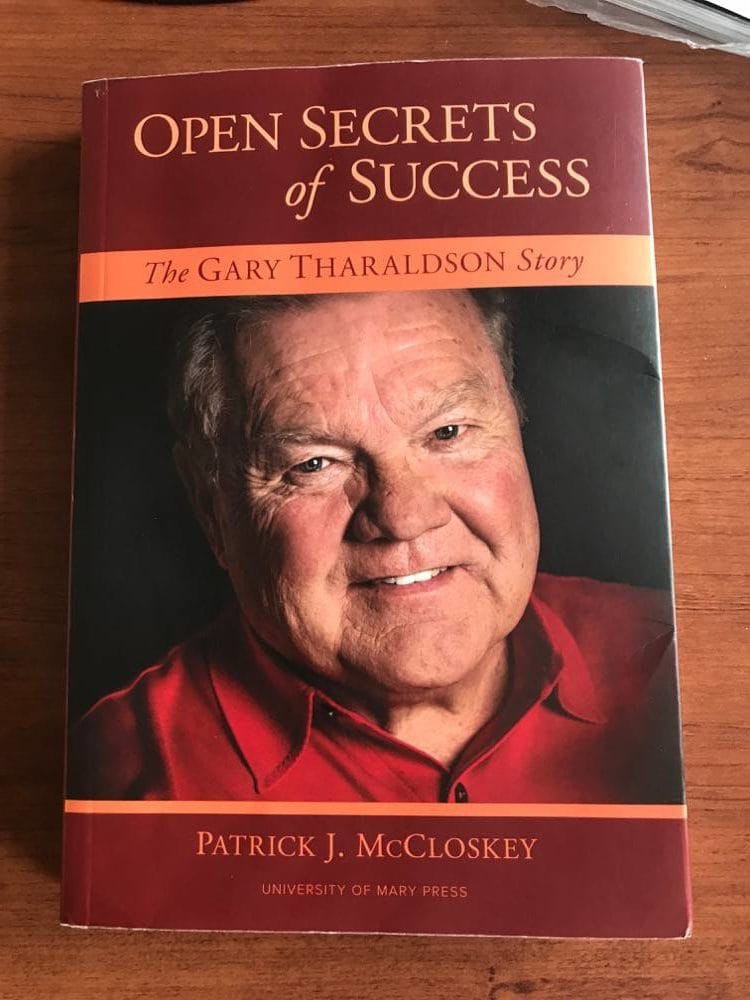
Published last year, this biography of Tharaldson was written by Patrick J. McCloskey. It is available for purchase on Amazon.
Despite his hectic work life and traveling, Tharaldson rarely missed his kid’s sporting events.
“When we’re young, we think we have lots of other things we need to do. Even so, I attended almost all my children’s sporting events. As we get older, we realize that family is most important.”
25. Treasure What’s Important
“One of my most treasured assets is my lake home. Why the lake home? Sometimes kids are always on the run. They want to stop by for a half hour or an hour. Well, at the lake, they come and stay the whole weekend. We get all that time together. That’s why I say it’s my prized possession. We get to spend the whole weekend with them.”
What His Employees Have Learned From Him
Many of Tharaldson’s employees have been with him a long time. We talked to two of them to see what lessons they’ve learned from him.
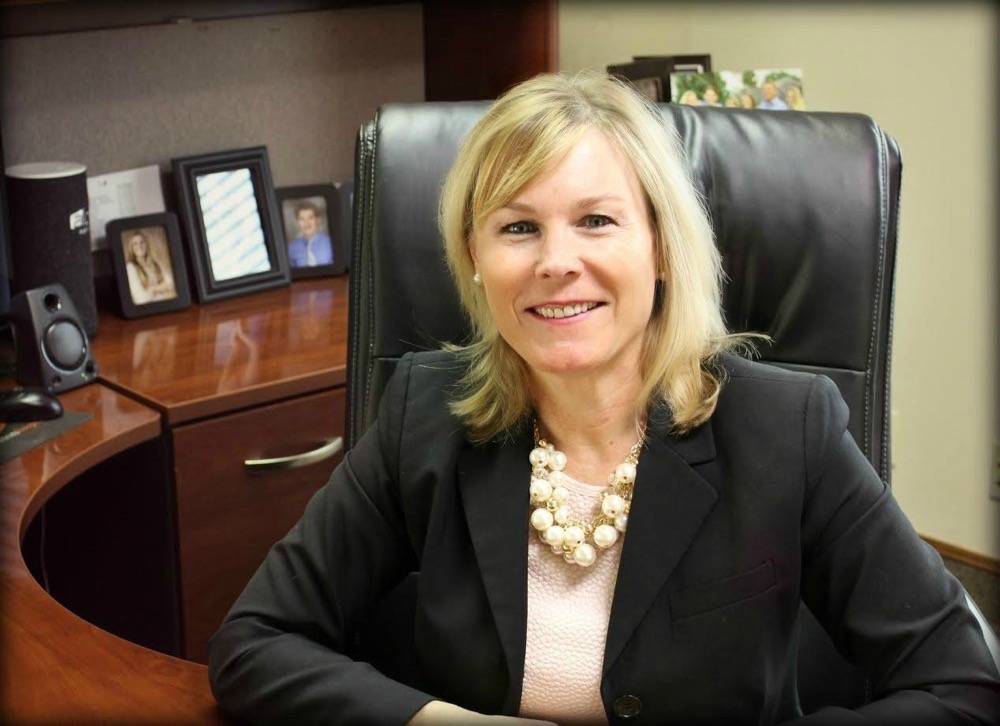
Aimee Fyke
Chief Operating Officer
Worked with Gary for 27 years
“Gary has a brilliant business mind and a true spirit of supporting his team to be successful. He is very generous with not only his money, but his time. I have never known anyone who will drop whatever they are doing to take time to chat with someone who needs feedback/answers like Gary Tharaldson. He epitomizes humility and kindness, not only in business, but in his personal life, as well. When I left Tharaldson Lodging in 2008, I went to work for a publicly traded company that had investments in the hospitality space. After three years with that firm, I asked Gary for an opportunity to come back to work with him. After my experience away, my new mantra was ‘I prefer to work for Main Street vs. Wall Street.'”
Lessons learned working for Gary:
1. Never forget to have a solid work/life balance. Quality family time is critical to success.
2. Always reward strong performance. We are a performance driven company.
3. Strong leaders lead strong teams. Always strive to be the “one to beat.”
4. Run your hotels like you are the CEO. Lead by example.
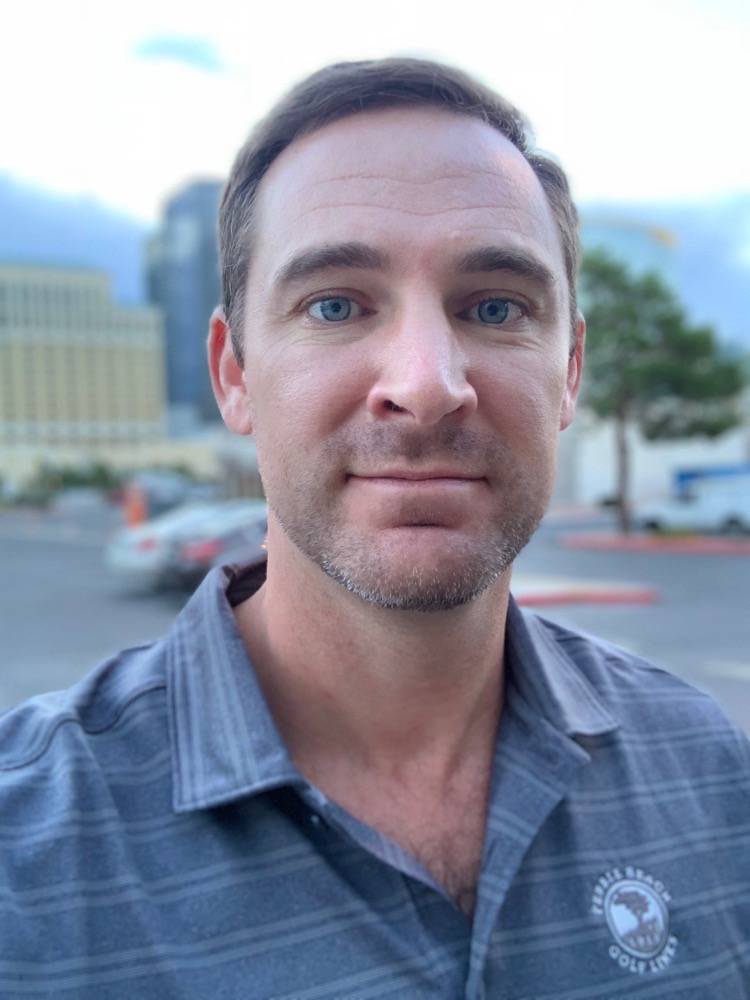
Joe Blagg
Development and Finance Manager
Worked with Gary for almost 12 years
“I’ve learned a ton from him on just how this business works and how he operates things maybe a little bit different than most other hotel operators to gain in efficiency.
“Big picture wise, I think the two biggest lessons I’ve learned from him are, he always says to keep things simple. I think he tries to uphold that. Nothing is really simple in our business, especially on the development side, but I think his ability to focus on the big picture and the big goals and not get caught up in some of the details. There’s plenty of people to work on the details. He keeps his eye on the big picture.
“I would say the other thing I’ve learned the most from him is risk tolerance. That’s one of the key attributes that separate him from a lot of other people. Keeping your formula kind of the same for choosing a location for a new hotel but, at the same time, not getting bogged down with potential negatives and keeping his eye on the big picture and being able to tolerate a lot of risk along the way.
“People who don’t play poker look at poker players, but good poker players will tell you that they aren’t gamblers. They understand the probabilities and understand the math. I think Gary is a little bit the same way with hotels. He doesn’t look at it as a large amount of risk because he knows it so well. A lot of people from the outside would say he’s taking a bigger risk than Gary says he is. Just because he’s done it so many times and he knows it and believes in his people and team that they’re going to make every property successful.”
